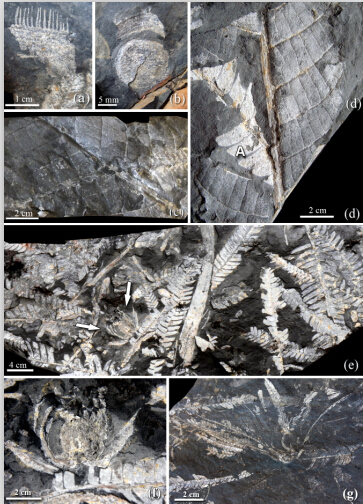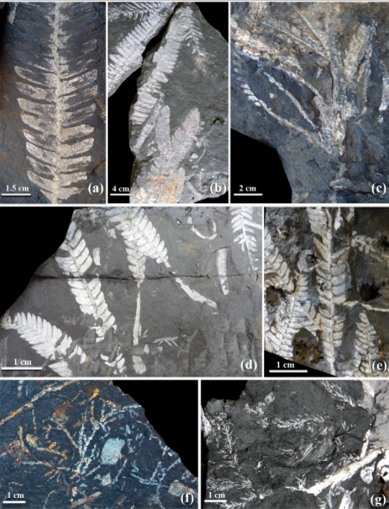Investigations of geologic and biotic events across the Triassic-Jurassic transition rely predominantly on detailed stratigraphic frameworks and biodiversity analyses. The alternating sequences of marine and terrestrial Triassic-Jurassic formations in Guangdong Province, southern China represent one of the most remarkable coal-bearing series in southern China. The Lower Jurassic strata are widely distributed in Guangdong yielding rich marine and non-marine fossil fauna. However, as little research has been conducted on fossil plant remains in this region, it is difficult to investigate the systematics, diversity, and floral aspects of the Jurassic.
In a recent study, Prof. WANG Yongdong and his team from Nanjing Institute of Geology and Palaeontology, Chinese Academy of Sciences have announced that diverse and well-preserved plant fossils were first found from the Jurassic in Shenzhen, southern China. This flora is dominated by the ferns, cycads and conifers and are preserved in the Early Jurassic deposits dated as ca.190 Ma. This represents the first discovery of fossil plants in the Shenzhen area, and the first documentation of Jurassic plants in Guangdong and the Pearl River Delta regions, the lower latitude regions of southern China. The results has been recently published online in Chinese Science Bulletin.
The researchers report their recent collections of rich fossil plants from the Early Jurassic Jinji Formation in the Dapeng area of Shenzhen, in southern Guangdong Province. Preliminary studies demonstrate taxonomical affiliations, preservation status, and diversity features of these plant fossils, which are marked by the close association of densely preserved, pinnae and rachis connected leaves, and the bennettitalean reproductive organs of Williamsoniella, which may represent an Early Jurassic plant community dominated by Otozamites of the bennettitales. Research related to these plant fossils will be helpful in the correlation of the Early Mesozoic coal-bearing strata in Guangdong, and will provide a deeper understanding of variations in plant diversity of the Triassic and Jurassic transition in southern China. Additionally, it will provide terrestrial plant evidence for explorations in Jurassic palaeoecology, palaeoclimatology, and palaeogeography of southern China.
This study was supported by the State Basic Research Program of China, the National Natural Science Foundation of China, the Knowledge Innovation Program of CAS, and the Team Program of Scientific Innovation and Interdisciplinary Cooperation of CAS.
Related information of the paper: Wang Yongdong*, Wu Xiangwu, Yang Xiaoju, Duan Wei, Li Liqin, 2014. The discovery of Jurassic plants from Shenzhen of Guangdong, southern China and related significance. Chinese Science Bulletin, 2014, doi: 10.1007/s11434-014-0449-5

Fig.1 Fossil fens and cycads from the Early Jurassic in Shenzhen

Fig.2 Fossil cycads and conifers from the Early Jurassic in Shenzhen
Download:
